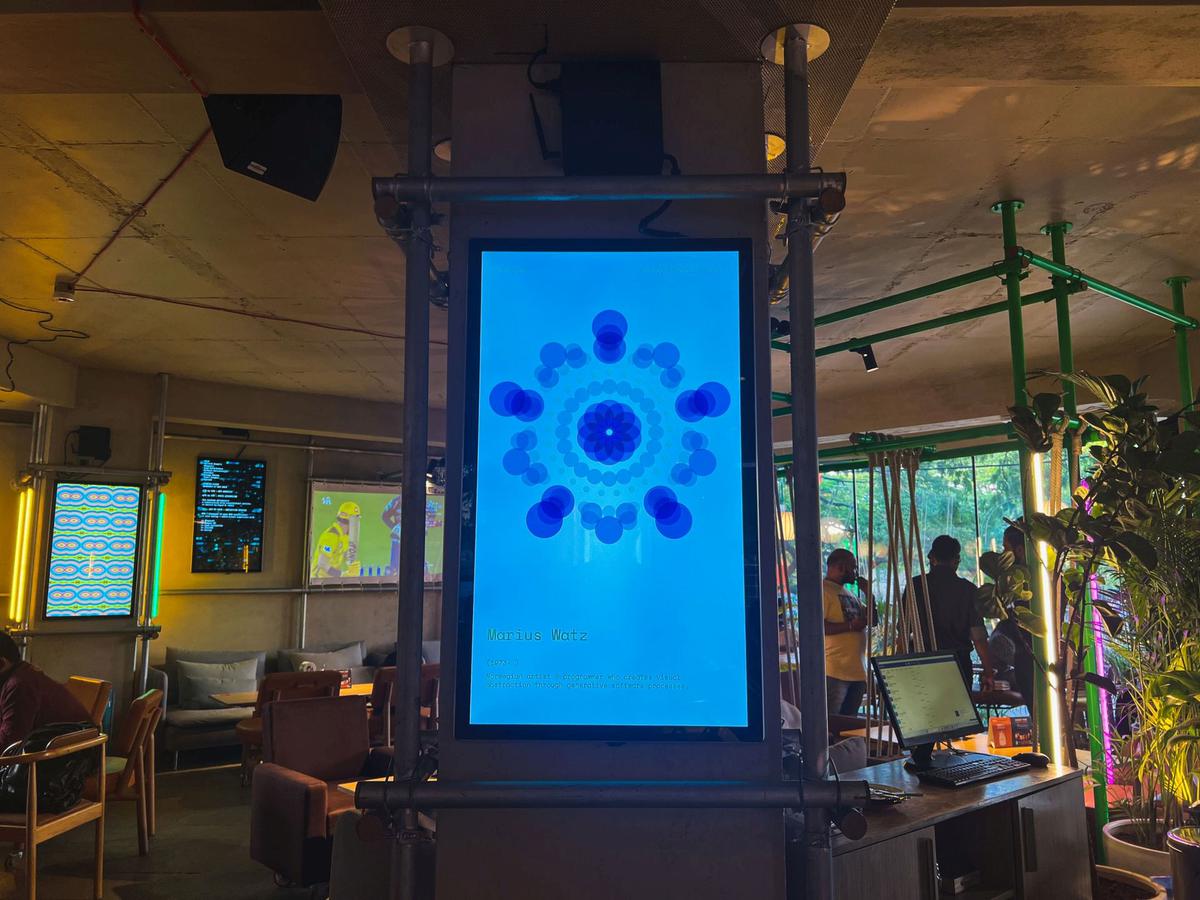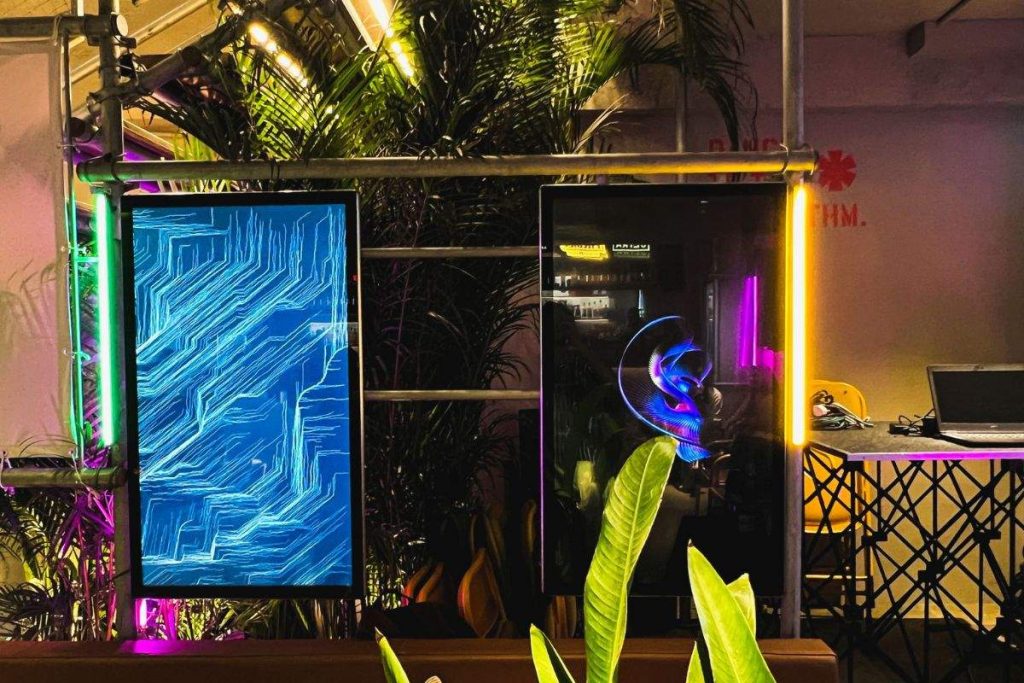Aditya Sisodia
Bengaluru, India – Art enthusiasts are flocking to the month-long “Art of Code” exhibition at SOCIAL New BEL Road, Bengaluru, where a diverse collection of digital art created using creative coding is on display. The exhibition, in collaboration with Tezos India, merges art and technology, offering an intriguing viewing experience for visitors.
Among the 12 participating artists, Mathura Govindarajan stands out with her captivating artwork titled “Kalie-code-scope.” Using p5js, a JavaScript library for creative coding, she has created an infinite range of mandalas, each fusion and breakaway producing new combinations of colours. The mesmerising patterns are a testament to her fascination with mandalas, symbolising the universe’s highest form and providing a meditative experience for the artist.

The exhibition also features works like Karthik Dondeti’s “Rock-face,” an interlocking web of filaments inspired by the terrain seen on a rock face. Dondeti, with a background in architecture, employed p5js and fxhash, an open platform for creating and collecting unique generative art NFTs on the Tezos blockchain, to bring his digital artwork to life. Additionally, 15-year-old Laya Mathikshara’s “See the Sea” showcases a captivating blue logarithmic spiral, evoking the imagery of a churning ocean and a shell resting on a beach.
Varun Desai, the head of Tezos India Art and Culture (TIAC), explains that the exhibition focuses on Indian-origin artists who express themselves through code. Desai emphasises that the curation includes both digital artists on the blockchain and those not yet on it, as they wanted to be inclusive and not exclude artists based on their blockchain involvement. For the artists on the blockchain, their projects are linked to NFTs through QR codes at SOCIAL, ensuring that any sales revenue goes directly from the collector to the artist. Unlike traditional art shows, SOCIAL and Tezos India do not receive any commission from these sales, providing a more direct and artist-centric approach.
Generative art, an artistic practice utilising lines of code to create artwork, traces its roots back to the 1950s when mechanical computers were used for drawings. Over time, the practice evolved and became more conceptual. Desai highlights the uniqueness of generative artists and their unconventional approach. The choice of holding the exhibition at SOCIAL instead of a traditional art space aims to make this art form accessible to a wider audience.
“Art of Code” is the third art exhibition hosted at SOCIAL’s physical gallery for NFT art, an ongoing initiative to introduce people to this emerging art form. Chirag Punjabi, Head of Business Strategy and New Initiatives at Impresario Handmade Restaurants, the owner and operator of SOCIAL, emphasises their commitment to providing a space for people to explore and appreciate art. In an era of digital transformation, art has also evolved, and the exhibition aims to bridge the gap between the analogue and digital worlds.

With the opportunity to experience and appreciate digital art, visitors are encouraged to explore the artworks. Should they feel compelled to purchase any of the exhibited pieces, they are welcome to do so, as the exhibition aims to nurture an environment where art can be both appreciated and acquired.
As the “Art of Code” exhibition continues until June 27, art enthusiasts and curious visitors alike are invited to witness the fusion of art and technology, offering a unique and captivating experience that celebrates the creativity unleashed through code.





